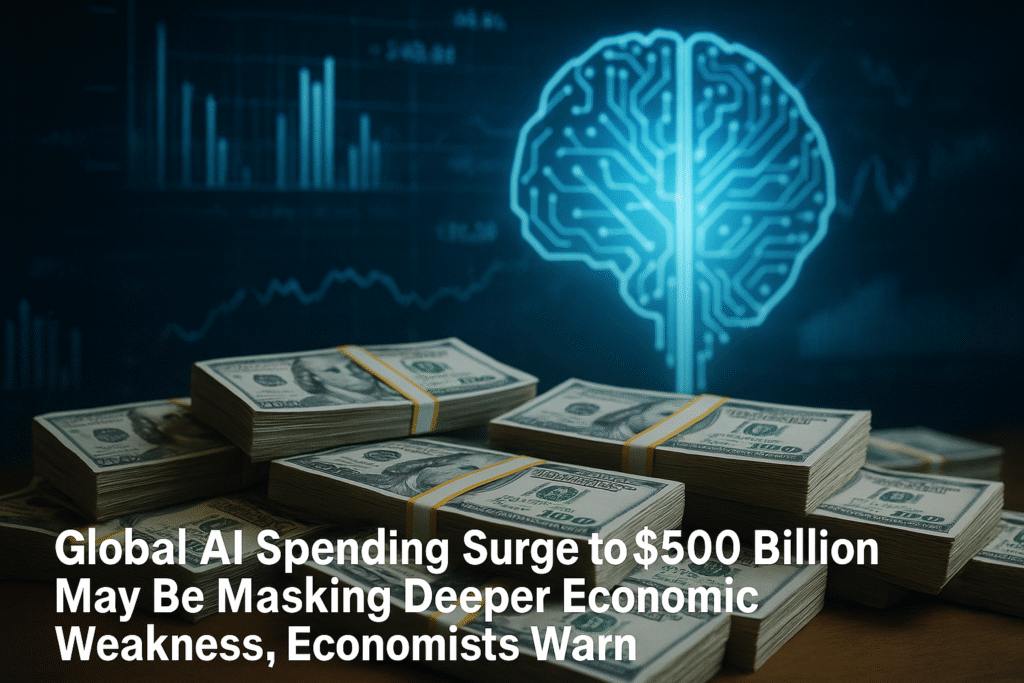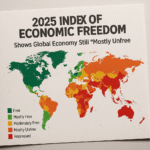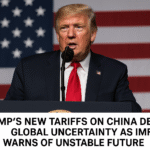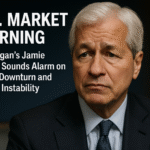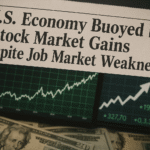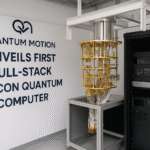By Harshit WASHINGTON — October 14, 2025
Global artificial intelligence spending is projected to soar to $375 billion in 2025 and surpass $500 billion by 2026, fueling GDP growth and investor optimism across markets. But beneath the surface, economists are warning that this AI-driven boom may be propping up an otherwise fragile global economy, raising fears of overreliance on technological investment to sustain growth.
AI Boom Reshapes Global Capital Flows
According to UBS, the rapid surge in AI investment is transforming economic priorities worldwide, shifting capital toward data infrastructure, cloud computing, and energy systems capable of supporting large-scale machine learning operations.
“It’s the start of trillions being spent in the buildout of the fourth Industrial Revolution,” said Dan Ives, managing director at Wedbush Securities. “Big Tech is doing the equivalent of building Las Vegas in the 1950s or Dubai 30 years ago — turning empty sand into the foundation of the future economy.”
Ives compared the current expansion to a massive infrastructure wave — from semiconductors to data centers — that could redefine how consumers and corporations interact with technology.
Economists Sound Recession Alarms
Despite the optimism, not everyone is convinced the boom is sustainable. A September 2025 analysis by Deutsche Bank warned that without AI-related investment, the U.S. economy might already be in recession.
“GDP is being driven by all this investment,” said Barry Knapp, managing partner at Ironsides Macroeconomics. “Earnings growth is being driven by all this investment. The S&P 500 is pretty unbalanced right now. That creates vulnerability to an investment bust — especially at a time when government spending has exploded to unprecedented levels.”
Knapp cautioned that an overconcentration of capital in AI infrastructure could distort real economic fundamentals. If companies scale back investment or face a liquidity crunch, growth could stall abruptly, exposing deeper weaknesses in employment and consumer demand.
Dot-Com Parallels — With a Modern Twist
Many market observers have drawn comparisons to the dot-com bubble of the late 1990s. However, today’s AI leaders — including Nvidia, Microsoft, and Alphabet — differ from their internet-era predecessors in one crucial way: they are already profitable.
Unlike the speculative tech startups of the 1990s, today’s AI giants are generating strong cash flow and steady earnings. But the scale of current infrastructure spending has raised concerns about corporate debt and sustainability.
Companies such as Oracle, Meta, and CoreWeave have each turned to bond markets and private credit to fund new data center projects, effectively borrowing heavily to finance future growth.
“As we see these astronomical estimates of how much capital will be needed to build out AI infrastructure — to prevent power prices from spiking — it’s clear this boom will require enormous debt over time,” Knapp said.
He also expressed concern over the broader labor market, warning that it “looks very, very weak” and may be “on the precipice of a more pronounced decline.”
Investors Split Between Optimism and Caution
Despite these red flags, many investors remain bullish on the long-term outlook of AI-driven growth.
“Will there be bumps along the road? Yeah,” said Ives. “But I don’t fear this is too big to fail — it’s backed by tech giants with trillions on balance sheets, generating another $300 to $400 billion in cash a year.”
Ives emphasized that global competition, particularly between the U.S. and China, is driving the rapid pace of AI development. “It’s an arms race,” he said. “They don’t have time to slow down because China is accelerating as well. I view this as an AI supercycle, not a bubble.”
Still, even supporters acknowledge the need for balance. Without broader diversification in growth sectors, an AI slowdown could trigger ripple effects throughout capital markets, employment, and fiscal stability — testing how much of the global economy’s strength is real, and how much is artificially intelligent.

